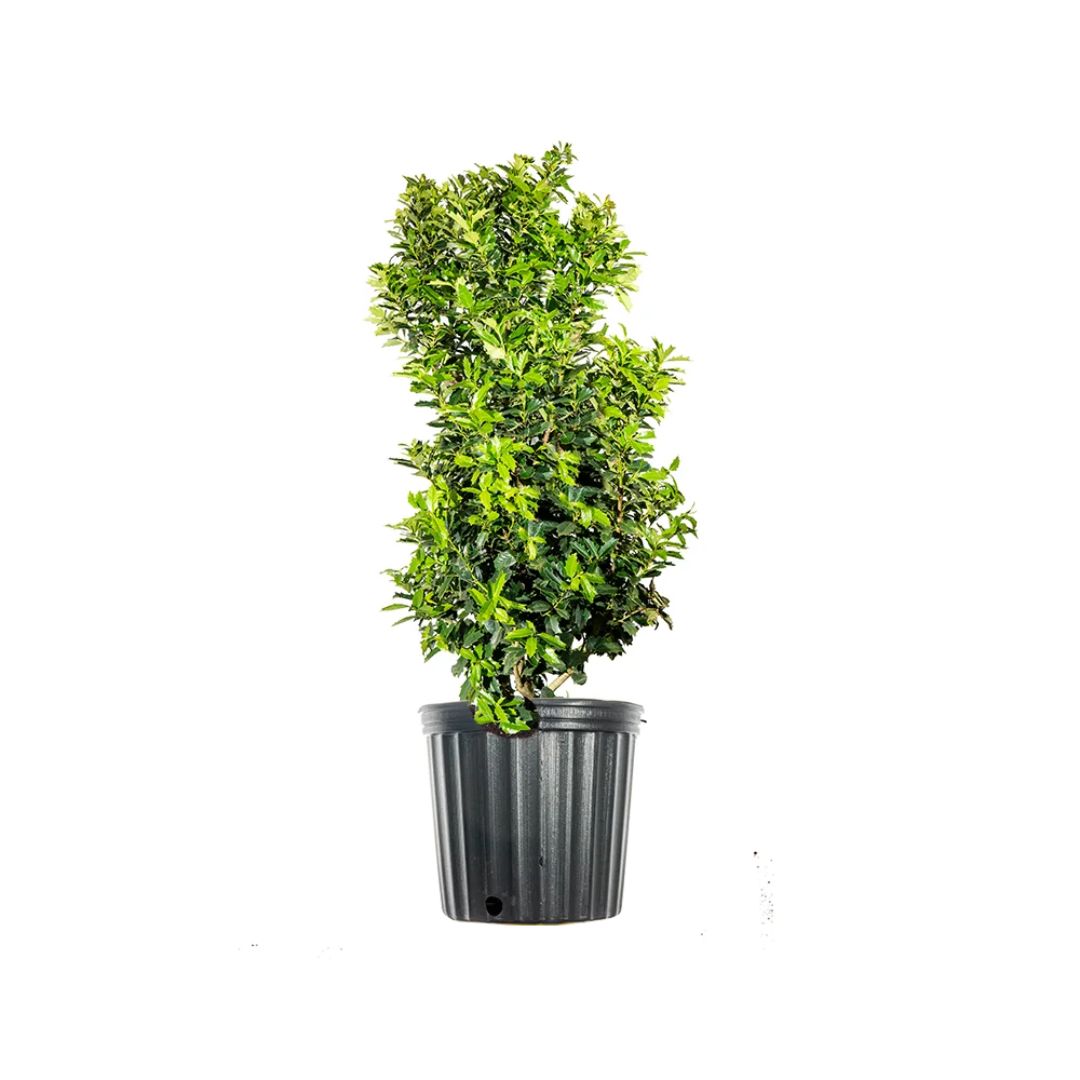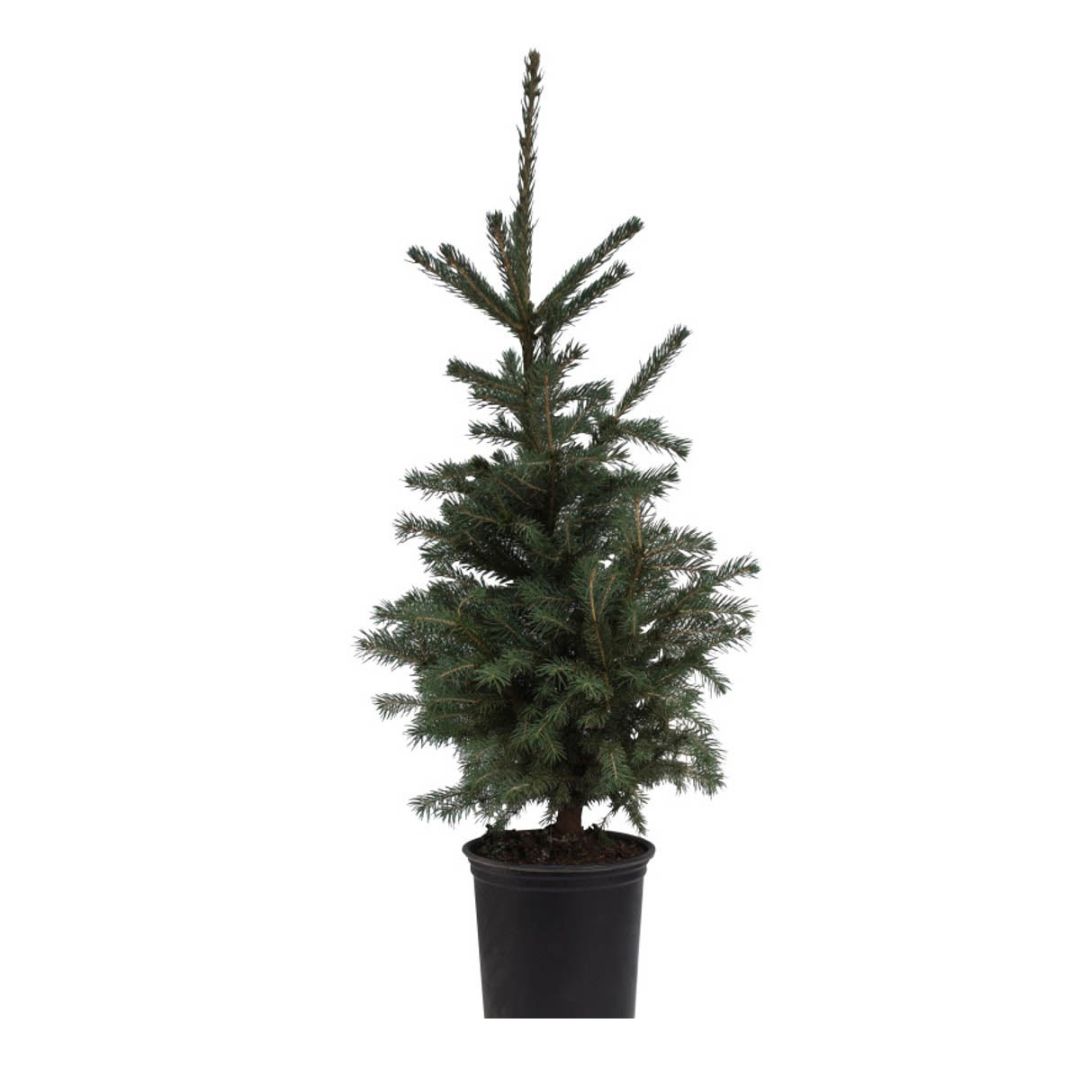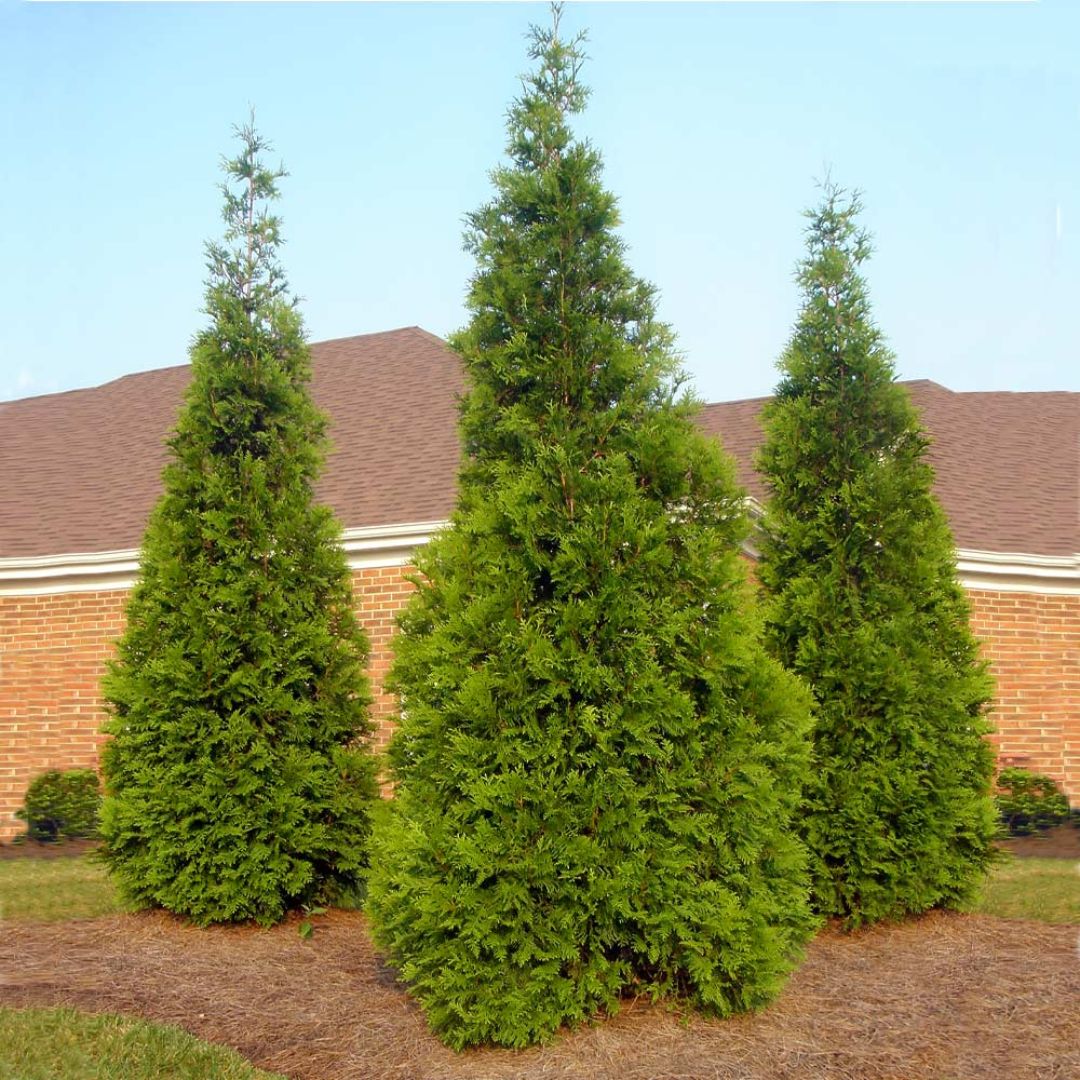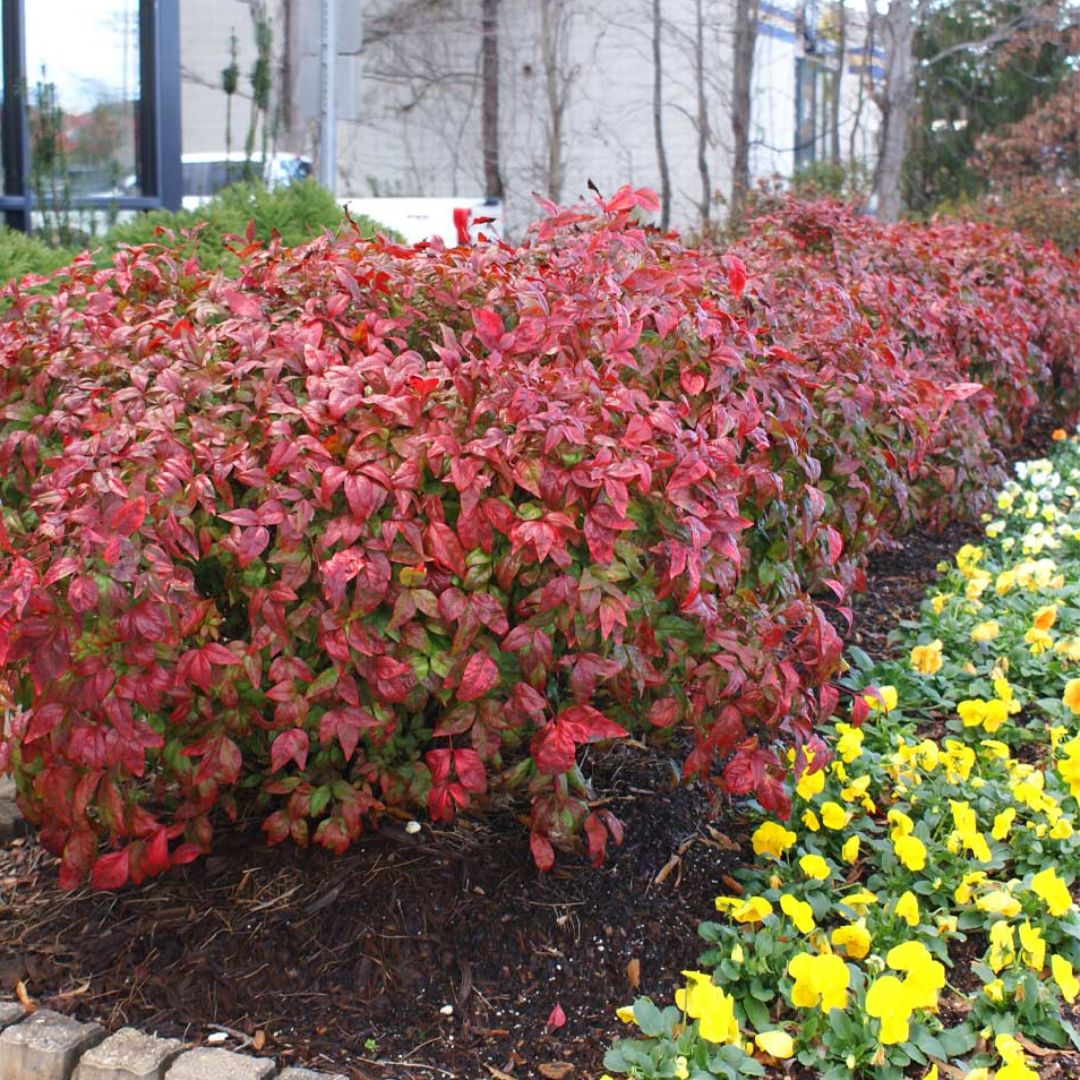6 Privacy Plants You Can Add to Your Fall Garden — For Vibrant Colors and Ultimate Screening
Don't let the annual leaf drop leave your yard feeling exposed; these evergreen privacy plants are ideal for planting this fall

Fall has many upsides, including (but not limited to) the cozy atmosphere, warming drinks, and the beautiful transitional hues of trees and shrubs. There is certainly a lot to love about this season! But one certain downside is the lack of privacy that comes with the inevitable fall leaf drop.
This is especially relevant for gardens with extensive deciduous hedging. Come fall, when the leaves start to turn and gaps begin to appear, your yard can certainly feel a bit exposed. Finding the best plants for privacy will help to maintain your yard’s security well into fall and winter!
Knowing where to start on this evergreen hunt can be a different matter though. Luckily, we’ve spoken to a plant expert to get a professional opinion on which shrubs and trees are worthy of a place in your yard. Whether you’re looking for year-round glossy greenery, or a fast-growing shrub to fix a fence gap, we’ve got solutions that will look great in every modern garden design.
1. Holly Shrubs

Classically associated with Christmas wreaths and garlands, we’re here to say holly shrubs aren’t just for the holidays! With glossy green leaves year-round and easily adaptable shapes, they’re a fantastic choice for gaps both small and large, and a favorite for landscaping expert Sydni D’Amico at Fast Growing Trees.
"American Hollies work great for providing privacy in the fall months. When most other plants are going dormant for the season, hollies retain their leaves year-round," says expert Sydni. "Another attractive seasonal characteristic of hollies is that the female plants develop red berries in the fall that persist on the branches until spring."
Think of holly, and the first thing that comes to mind is probably its famous spiked leaves. Although it’s not ideal for a pathway you’ll frequently brush past, as Sydni explains, it’s a great choice for resisting the appetites of the local deer. "Hollies are deer resistant due to their spiny foliage, making them the perfect option for areas with high deer populations." But did you know that holly has evolved to only form its iconic spikes on the lower branches which are accessible by deer? Next time you see a holly shrub, take a look further up the tree and you’ll see rounded leaves!
If you want a shrub with Sydni’s expert’s seal of approval, look out for Nellie Stevens Holly Shrub, Oak Leaf Holly Tree, and Dwarf Burford Holly Shrub.
The Livingetc newsletters are your inside source for what’s shaping interiors now - and what’s next. Discover trend forecasts, smart style ideas, and curated shopping inspiration that brings design to life. Subscribe today and stay ahead of the curve.
Hardiness zones: 5-9
2. Spruce Trees
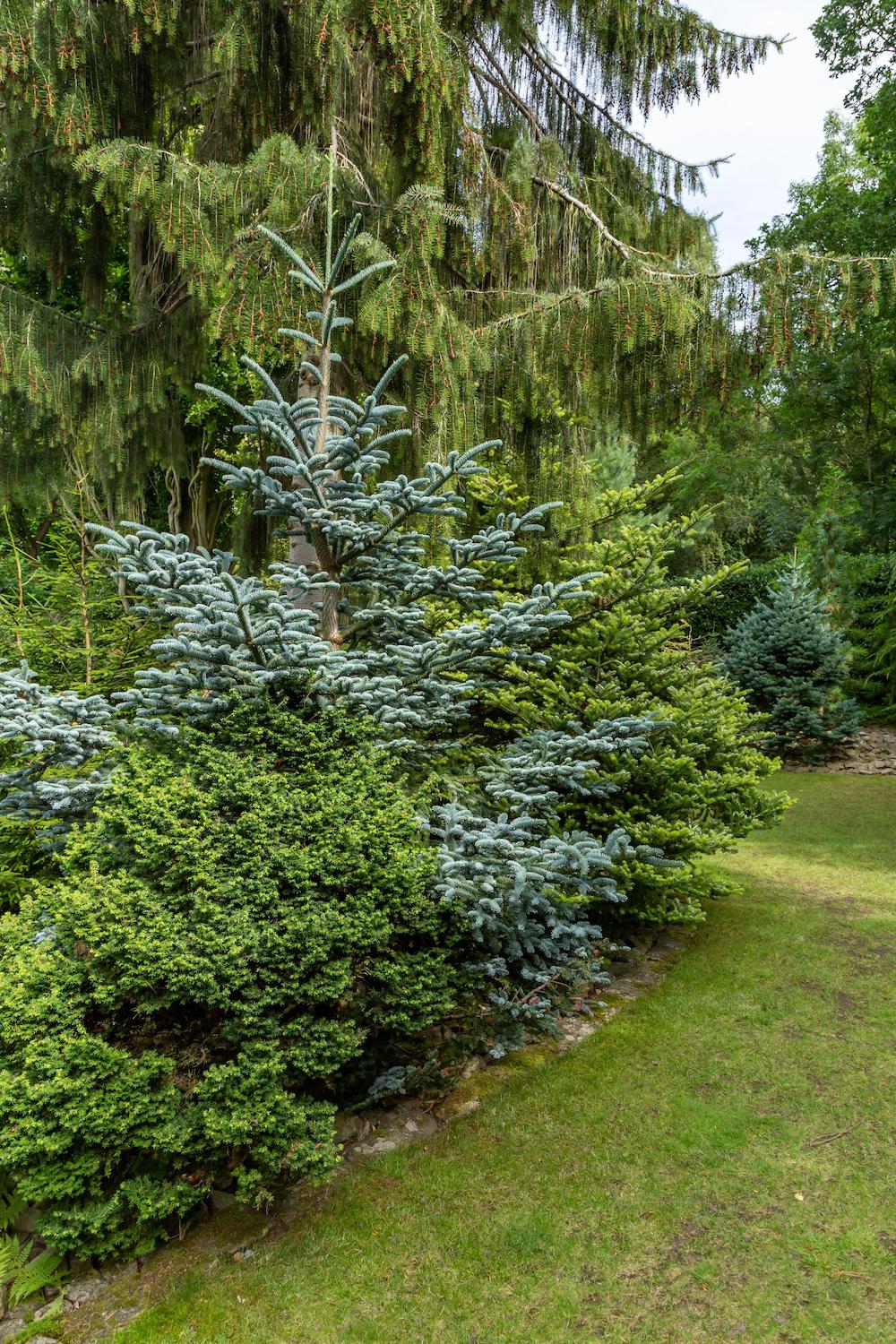
Another affordable privacy tree that is also closely associated with the holidays and looks sensational year-round is the iconic spruce tree. And, as Sydni highlights, it’s the perfect choice if your climate is known for its harsh weather!
"Spruce trees are amazing for providing fall privacy, especially in cooler climates or high-altitude locations, because they are very cold-hardy," says plant expert Sydni. "Each variety has a unique foliage characteristic such as the vibrant silver-blue hue of the 'Colorado Blue' and 'Baby Blue' spruces or the elegant weeping form of the 'Norway' spruce. Spruces are also able to handle drought conditions better than other needled conifers once established, making them ideal for harsh environments."
However, just because these trees don’t mind the cold, doesn’t mean they like overly wet soils. Sydni explains, "Choose a full-sun location with well-draining soil for your spruce tree. Spruces do not enjoy wet feet, so avoid planting in waterlogged locations or areas that regularly flood. If you are in a more northern location, spring/early summer planting is preferred over fall planting to ensure the tree has enough time to establish before freezing temperatures begin to hit."
Hardiness zones: 2-8
3. Thuja Trees
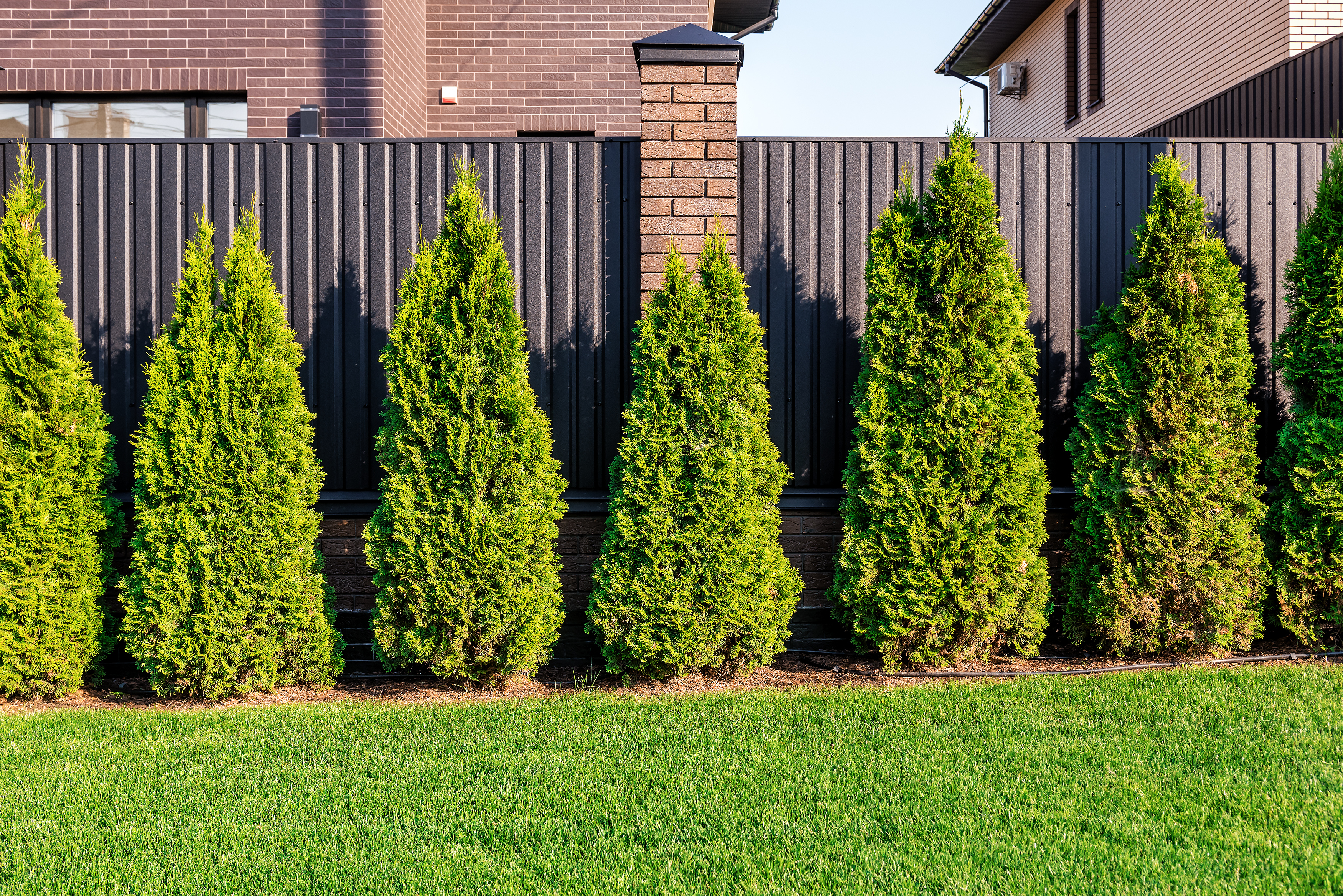
Not all of us gardeners are gifted with patience. Sometimes you need results, and you need them fast! One plant that meets Sydni’s criteria for an attractive, fast-growing tree with great year-round privacy, and one of the best trees for privacy, is the Thuja tree. Plus, its differing tonal qualities between varieties mean you don’t have to miss out on that comforting amber-hued foliage in fall either!
"Arborvitae (Thuja) trees are a perfect option for fall privacy, and their fast growth rate makes them popular among those who are looking for quicker results," says expert Sydni. "Select varieties such as the Forever Goldy™ and Fire Chief™ even have attractive foliage colors ranging from warm orange-gold tints to bright yellow-green depending on climate conditions."
To help your thuja tree continue to grow to its best ability, Sydni thinks it’s better to keep it simple. "Keep the soil moist while the tree is establishing its roots for the first couple of months. Fertilizing at the time of planting is discouraged though, unless it is a root stimulant. Once established, they require no pruning or additional fertilizing, though an annual application of a 10-10-10 fertilizer is recommended (like this Southern Ag All Purpose Granular Fertilizer 10-10-10, from Amazon) if you’d like to help boost growth."
Hardiness zones: 5-9
4. Nandinas

Though large shrubs are great for concealing large gaps in your yard, sometimes we’re after small and compact evergreens to incorporate into our beds and landscaping. That's where Nandinas comes in. They also make the ideal choice for evergreen shrubs for front yards.
"Nandinas are great shrubs for fall privacy since they are evergreens in warmer climates and semi-evergreens in cooler climates. Because of their smaller size, they work great for providing privacy for the outside of first-floor windows or even to cover up small unsightly structures," says expert Sydni.
"Varieties such as the 'Fire Power' and 'Lemon Lime' have attractive fall foliage ranging from bright red to vibrant yellow-green. Additionally, due to their compact size, they can even be planted in containers for privacy on patios, balconies, or tight spaces."
However, before you start breaking soil, it’s always best to do your research and ensure you’re not planting a Nandina that is invasive to your local area! Sydni warns, "Nandinas can be invasive depending on your location so always check first with your local agricultural extension office to ensure they are okay to plant where you are. If you are in a location where nandinas are invasive, consider using non-invasive varieties such as the 'Fire Power' or other native plant options."
Hardiness zones: 6-9
5. Junipers
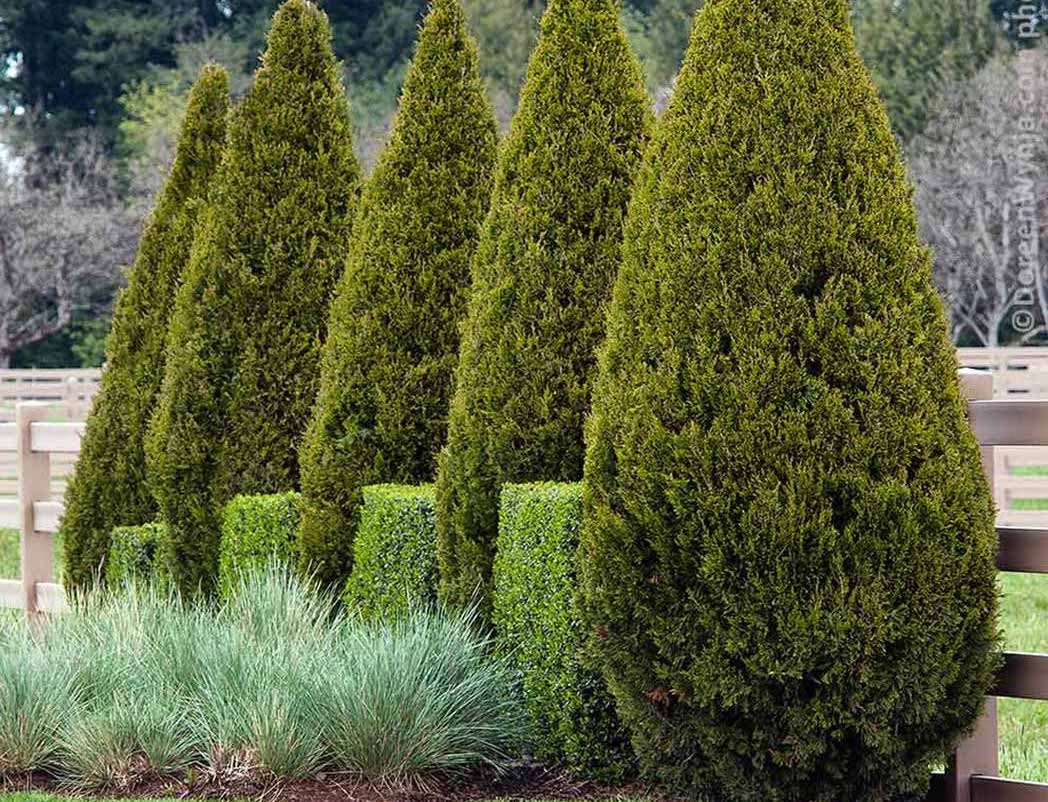
Searching for narrow garden ideas? Then the Juniper tree may just be your best bet. Often recognised for its fruit’s culinary uses, juniper trees are a great all-round option for many yards lacking privacy at this time of year.
Expert Sydni explains, "Junipers are perfect for providing fall privacy and are excellent options for many locations due to their adaptability to various climates and conditions. Certain varieties such as the Eastern Red Cedar (though the common name includes Cedar, this tree is genetically a Juniper) are native to the Eastern U.S., making them an environmentally friendly option."
Although we often associate evergreens with deep, glossy green foliage, Juniper trees also come in a variety of subtle blue-grey shades that look sensational when contrasting against the more golden tones of fall. "Other varieties, such as the 'Wichita Blue' and 'Moffat Blue', have striking blue-gray foliage that is sure to stand out in the fall and winter months; and varieties such as 'Hollywood': have unique, twisting branching structures that give an elegant silhouette to the landscape," explains Sydni.
Plus, the easiest part about a juniper tree is that once they’re planted, they can be left to grow happily! You don’t need to worry about pruning or fertilizing; as long as they’re in well-draining soil, these trees will look after themselves throughout all conditions.
Hardiness zones: 3-9
6. Loropetalum
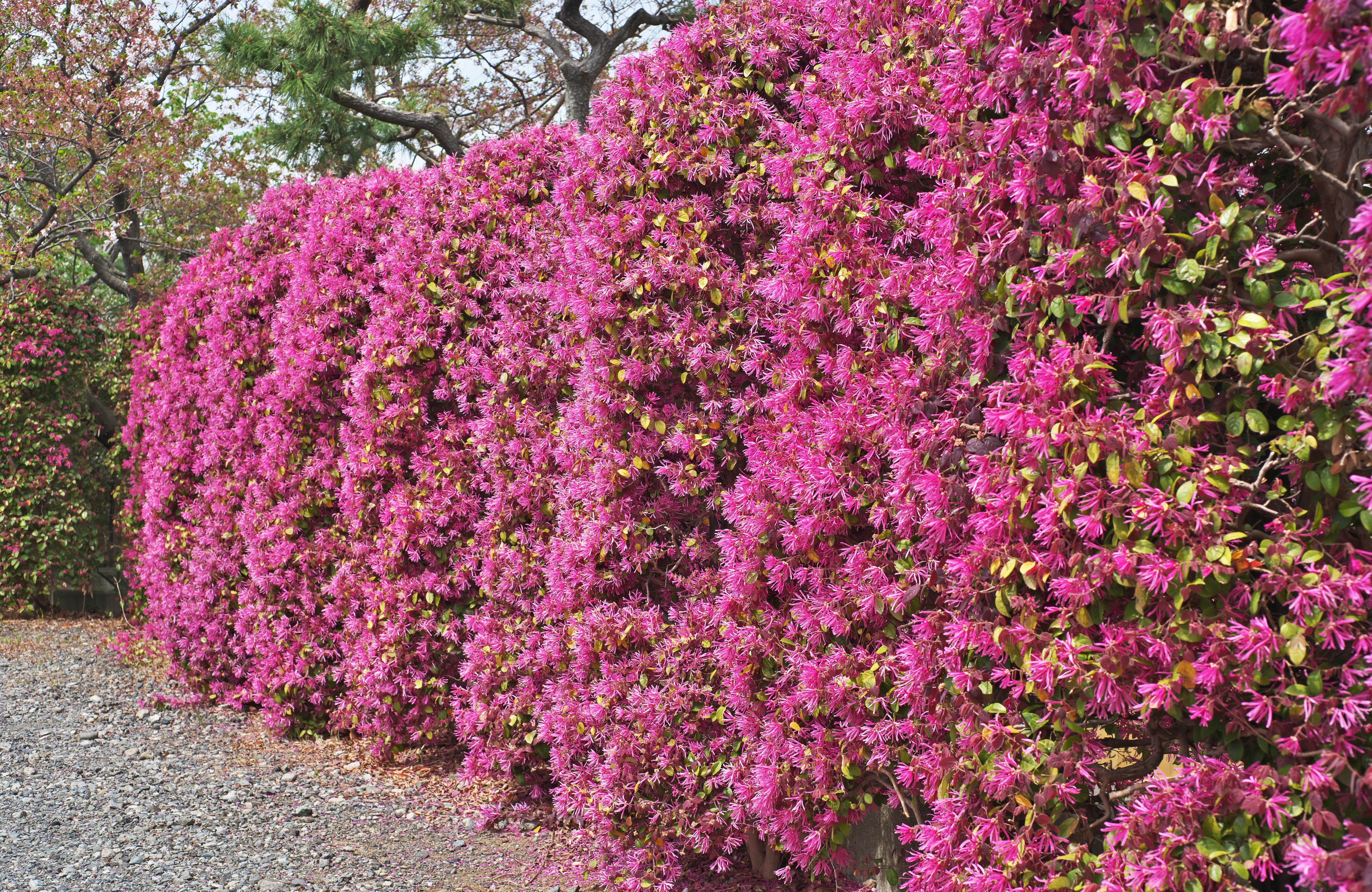
Not all shrubs have to be large to be impactful. In fact, some compact varieties like Loropetalum “Daruma” make perfect container plants that can be moved around your yard or balcony to fill in gaps throughout the season. Best of all, they're known to be gorgeous fairy-tale garden plants and will certainly bring that whimsical feel into your home.
Sydni explains, "Loropetalums are great shrubs for fall privacy since they are evergreens in warmer climates and semi-evergreens in cooler climates. Varieties such as the 'Daruma' and 'Cerise Charm' have captivating dark purple fall foliage that brings intrigue to the landscape when most other plants are bare for the season. The more compact varieties, such as the 'Daruma' and 'Purple Pixie® Dwarf Weeping Loropetalum', make perfect options for container planting to provide privacy for patios, balconies, and tight spaces."
When you’re planting, just be sure to mix in a good amount of acidic-based compost if your soil is more on the neutral or alkaline side! To plant like a pro, Sydni says, "Plant your loropetalum shrub(s) in a location with full sun to partial shade and well-draining soil. Loropetalums prefer acidic to slightly acidic soils with a pH between 4.0 and 6.5; if your soil is more alkaline, amend it with soil additives such as peat moss or iron sulfate to lower the pH. If you are located in a cooler climate, it is ideal to plant them in a location that is protected from strong winter wind gusts."
Hardiness zones: 7-10
FAQs
What are some fast-growing fall shrubs?
If you are looking to fill your fall gardening space quickly and screen your yard, then you can opt for planting the ever-so-abundant Thuja Tree.
These shrubs can grow 3-5 feet per year in height and look lush planted next to one another in a neat, clean row.
Matilda Bourne is a freelance homes, gardens and food writer, stylist and photographer. Known for creating and capturing content for multiple international brands, her work has been featured in The Telegraph, The Daily Mail, and Hello! magazine. When she’s not writing, you can usually find her tending to her much-loved garden and scouring thrift stores for vintage furniture.
